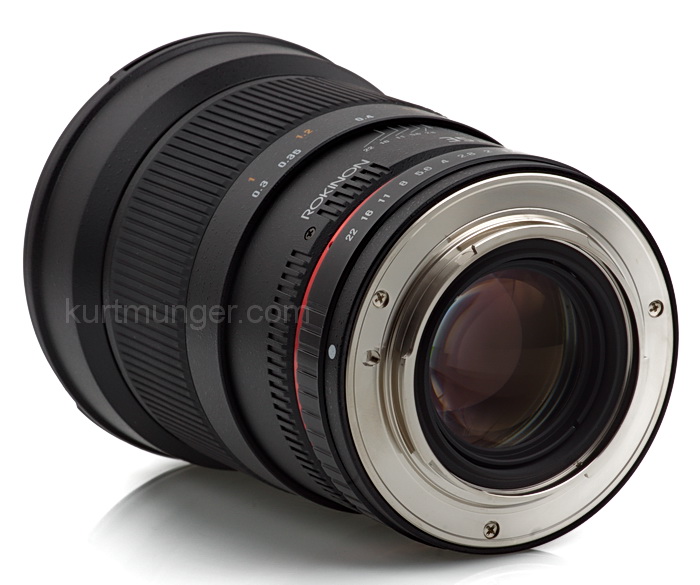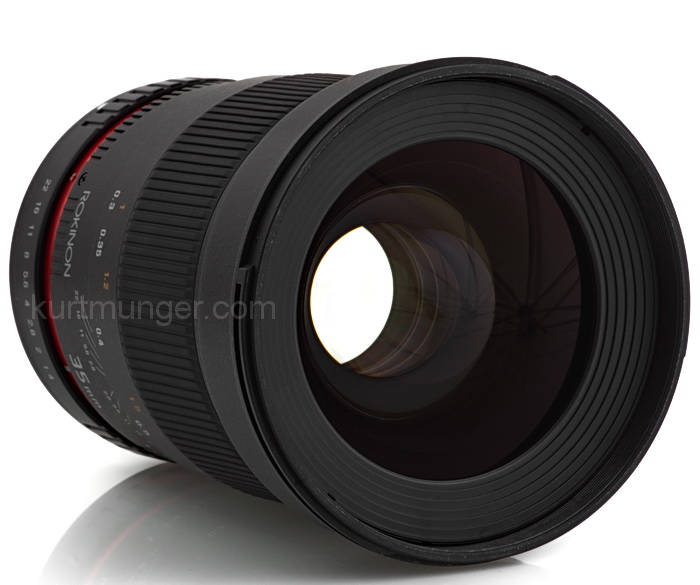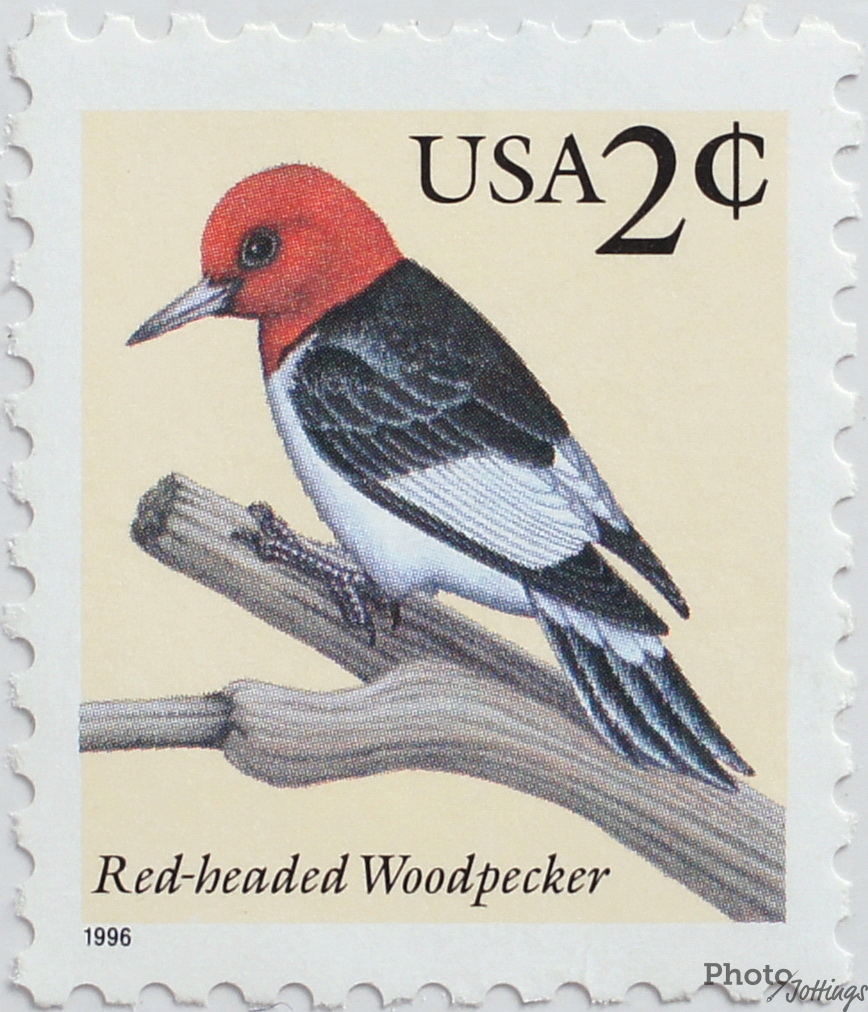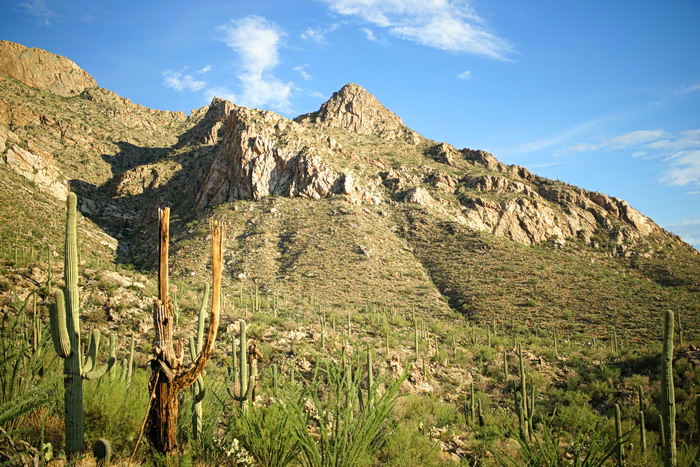|
Full review of the Rokinon 35mm F/1.4 lens. The Sony A580 and A900 were used for this review. For a better understanding of terms and methods used in this review, go here.
The usual center, mid-section and corner crops are located at the very bottom of the page.
Introduction.
The relatively inexpensive Rokinon 35mm F/1.4 UMC aspherical lens was introduced in 2010, and is available for most major camera mounts, including Sony alpha. It may also be found labeled walimex, Falcon, Opteka, Pro Optic, Vivitar, Bowers and Samyang. I’m told Samyang of South Korea is the original manufacturer. The lens says “made in Korea.”
Found on the outside of the lens is a plastic aperture ring and plastic manual focusing ring, no focus hold or limiter buttons. Build materials of the body seems to be a mix of metal and plastic. Build quality is generally good, with a good fit and finish. Additionally, the plastic filter ring at the front that surrounds the front element is thin, and bends easily with finger pressure. Make sure you don’t strip the threads when mounting a filter. The lens body has an appealing black spatter paint finish. Rokinon claims the use of one aspherical, and two “high refractive” elements in the design of the lens.
Use. Make sure you select “enable” for “release W/O lens” on your camera, otherwise, the camera thinks no lens has been mounted, and won’t release the shutter. This is a manual lens only, meaning there is no communication with the camera (on a Sony model), you must use manual focus, and choose an aperture. Exposure metering is ok, but you’ll need to check your LCD after each shot and adjust for best results. Also, white balance metering may change as you stop down the aperture; I’ve noticed it’s warmer at larger apertures, from F/1.4-2.8, and cools off at F/5.6 and smaller, so check you LCD if you’re shooting in Jpegs; with Raw it’s no big deal. The aperture settings are marked in one stop increments between F/1.4-2, and F/16-22, everything in between is in half stops. It is possible to use an in-between aperture, you’ll have to carefully turn the ring and set it between marked stops, although I don’t know why you’d want to do that. The viewfinder is very dark when the aperture is set smaller than F/5.6.
Don’t set the lens down on the mount side without a cap when the focus is set to infinity, if you do the rear element will touch the surface and the lens will wobble around and fall over.
Note; bright daytime use at F/1.4 will often result in having to use a shutter speed of 1/8000 at ISO 100. Most consumer grade cameras don’t have that shutter speed, (the pro bodied Sony A700/A850/A900 do) so you’ll need to use a neutral density filter to bring down the light value and get the proper exposure.
The aperture blades form a nice circle between F/1.4-2, however, from F/4-22 the hole increasingly becomes octagonal.
EXIF data reads 0mm for focal length, and F/1 for aperture. The live view screen will read F– with no aperture.
In the box is the lens, front and rear caps, plastic petal type hood, a stinky black fake velvet carrying pouch and owner’s manual.
Focusing. Manual focusing only. The focusing ring is damped perfectly in my opinion, and is pretty easy to turn with one finger. Focus ring travel is over 1/3 of a turn form close-up to infinity, which is a good amount of travel, but precise focusing (at less than infinity distances) at F/1.4-2 requires practice (and luck) as you can’t see the difference in the viewfinder, even with an “M” focusing screen. My copy delivered proper focus when set at the infinity hard stop mark.
Requisite product shots.
General information and specifications.
Optical qualities summary.
Lens flare/ghosting. About average control. At large apertures I see some multi-colored rings that may ruin the image, but stopping down results in mostly isolated colored blobs when the sun is close to, or inside the shot, see examples below.
Light fall-off. large amounts on full frame at F/1.4, but brightens up at F/2. See samples below.
Color fringing (CA). Lateral color fringing control is way above average. I see just a tiny bit of magenta and green at the edges of the image. You see minor amounts of axial color fringing, but it clears up by F/4.
Bokeh. harsh at F/1.4, but smooths out when stopped down, see examples below.
Color. seems slightly warmer (more yellow/orange) than Sony lenses.
Close up filter. N/A
Coma. None.
Regular filters cause no additional light fall-off on APS-C or full frame cameras.
Filter size. 77mm. Sony uses this size on the CZ 24-70mm F/2.8, 70-200mm F/2.8 G, CZ 135mm F/1.8, 11-18mm F/4.5-5.6, and the 70-400mm G.
Distortion. mild to moderate barrel distortion.
Distortion example directly below.
Distortion is not a problem with this lens.
Bokeh samples.
Bokeh looks a little harsh at F/1.4, but does smooth out nicely at F/2. The octagonal aperture shape shows up when stopped down past F/4.
Light fall-off samples.
Light fall-off is somewhat heavy at F/1.4, but improves greatly at F/2.
Let’s check out the macro capabilities of this lens.
Below, check out the cropped image (322kb) of the stamp. The sample shot was taken with the Sony A 580 16.2MP camera. The subject is a standard US stamp, 0.87″x 1.0″ or 22mm x 25mm. Also, note the macro shot was taken as close to the subject as focusing allowed; in this case a short 7.5″ (184mm), measured from the front of the lens barrel to the subject.
This lens has an approximate reproduction size of 0.20x (1:5) which is about average for today’s wide angle prime lenses. The stamp shot looks ok, but lacks contrast, (actually it sucks). There was little difference between F/4-8. As a side note; the “1996” on the bottom left of the stamp measures a mere 1mm wide.
_______________________________________________________________________
Full frame results using the Sony A900 below.
Check out the differences when using a film or full frame camera below. I’m only pointing out the noticeable issues as compared to the APS-C bodies, so if I don’t show it here, the results are not significantly different enough to warrant posting an additional set of images in this section.
Light fall-off
I see heavy light fall-off at F/1.4. However, by closing the aperture just one stop, the frame lightens up tremendously. There’s enough light fall-off at F/1.4 to possibly mess up your auto-exposure system, make sure you don’t over expose the middle area.
Full image below illustrating light fall-off from A900.
Here’s a full scene that shows actual-use light fall-off with the lens wide open. Dark corners are not really noticeable, but be careful when using F/1.4, make sure the centers are not over-exposed, as they are slightly in this shot! Data for the image is; F/1.4, 3200sec, ISO 100. Flare and Ghosting.
When the sun is in the image, there are multi-colored (or rainbow) blobs visible, but severity depends on angle and aperture. At F/1.4-2, you’ll see some large rings opposite the sun. When the sun is out of the image there are still minor ghosting problems, so use your hand as a light block, which works better than the included hood.
Full frame distortion.
Full frame coverage shows moderate barrel distortion, with a simple signature, and can be mostly corrected with distortion repair sliders.
Real-world close focus shot.
This close focus shot at F/1.4 looks good, and doesn’t show a lack of contrast like the stamp shot does. I see a smooth, de-focused background, but this isn’t bokeh, it’s just out of focus, along with a wide aperture. Coma samples.
This lens produces no coma! I find this very surprising as even the newest lenses from Sony of this type have much more than you see here. Coma takes the form of weird, smeared blobs at points of light in the corners of the image, especially in wide angle lenses. The Christmas tree lights here show nothing of any consequence, although I do notice the corners are very sharp at F/1.4! 100% crops from the far corners. Exposure differences are from light fall-off.
Conclusion.
The Rokinon 35mm F/1.4 was unveiled in 2010 with much fanfare, and as of mid 2011, is available for the Sony “α” mount.
Optically speaking, the Rokinon 35mm F/1.4 is excellent, with very high sharpness at almost all apertures, low distortion, minimal light fall-off at F/2, and no coma, even in the far corners at F/1.4! Probably the biggest drawback for most people is the fact that it’s a manual only lens, meaning there is no communication between the lens and camera (Sony models), so if you aren’t familiar with using full manual controls, you might want to skip this lens until your skills improve.
The Rokinon 35mm F/1.4 is best used on a full frame camera, therefore, I can’t recommend it for APS-C models. Why? The Sony DT 35mm F/1.8 SAM is sharper in the centers at all apertures, and stopped down a little will match the mid-sections and corners of the Rokinon. Additionally, the Sony is very small and light-weight, with full auto focusing and metering, and costs less than half of the Rokinon. I’ve been bragging up the Sony 35/1.8 SAM since it was introduced, and you can see why by checking out the comp at the bottom of the review!
I didn’t have the Sony 35/1.4 G on hand for this review, but I’m pretty sure the Rokinon is much sharper all around at F/1.4-2. |
Sample crops from the centers, mid-sections and corners using the full frame Sony A900.
|
Center
|
Mid-section
|
Corner
|
|
|
F/1.4
|
 |
 |
 |
|
F/2
|
 |
 |
 |
|
F/2.8
|
 |
 |
 |
|
F/4
|
 |
 |
 |
|
F/5.6
|
 |
 |
 |
|
F/8
|
 |
 |
 |
|
F/11
|
 |
 |
 |
|
I see soft wide open results, mostly due to a lack of contrast, however, there’s plenty of detail present. When you stop down to F/2-2.8 the image sharpens up dramatically, and doesn’t get too much better by closing the aperture more. Diffraction is noticeable at F/8-11. Maximum performance seems to be around F2.8-4 in the centers, and F/4-5.6 for the mid-sections and corners, that’s excellent for a full frame lens, or any lens for that matter. Sony A900 tested. Exposure differences are from light fall-off.
Please check out the Rokinon 35mm F/1.4 at B&H Photo and help support the site!
___________________________________________________________________________________________________________________________
Bonus section using the Sony A580 APS-C camera.
I’ve worked up a direct comparison using the Rokinon 35/1.4 and Sony 35/1.8 SAM lenses. The distance from camera to subject is about 40′ (12.0m). The Sony A580 was used for this comparison, along with a tripod, remote shutter and the white balance set to 5900k. Bracketed manual focusing was used, with the resulting absolute sharpest shot used as the base for the entire set, at each length. Exposure differences are from light fall-off. All camera settings were the same for each lens. Centers
I see the cheap Sony lens is sharper in the centers at all apertures, but not all that noticeable beyond F/2.8. All crops have the exact same camera settings. Color differences are caused by the lenses.
Mid-sections
If you look really close, the Rokinon seems to be a bit sharper at wide apertures, but they’re about the same at F/4 and smaller.
Corners
The Rokinon is clearly sharper in the corners at F/2-2.8, but both are about the same beyond that. The Rokinon is a full frame lens, and the Sony is an APS-C lens, so the Sony is at a clear disadvantage in the corners. |




















































